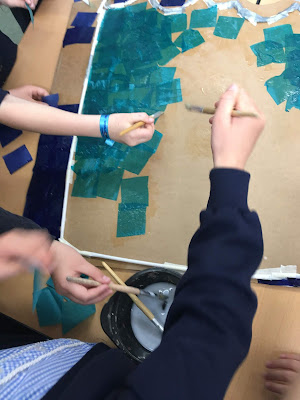We are busy getting ready for the summer here
at MoDiP and during August we are offering some fantastic family activities, themed around our current exhibition Revolution.
Activities will allow families to learn about sustainability in
plastics, recycling and upcycling.
 |
| Illustration by Martin Brown https://www.modip.ac.uk/engagement/schools/eco-plastic-detective |
MoDiP will welcome Eco-plastic Detectives who will engage in an ‘I spy Eco-plastic’ activity, requiring children to put on their detective hats. They will explore and find certain objects within the display cases of the exhibition ‘Revolution’. This activity is a drop-in session taking place throughout August with a self-led worksheet. If you are interested in coming along, please check out our opening times on our website before making your journey.
There will also be an activity to investigate
plastic packaging seeing families members become an Eco-plastic Investigator. Using a magnifying glass children will explore objects to find the recycling triangle.
They will write down the number and letters they see in or near the recycling
triangle. Then with the help of an Identification Code List they can find out
what the number and letters mean. This session
requires booking a ticket via Eventbrite. There are various
sessions throughout August.
We also have an activity that will allow
families to become Eco-plastic Makers. Why
not come along and put into practice
your skills of upcycling by making a woven bag from used plastic bags. There are a limited number of places
for this activity so please ensure you book a ticket, via Eventbrite
Please note that all children must be
accompanied by a responsible adult at all times.
If you require more information about any of
the family activities above please call 01202 363727 or e-mail modip@aub.ac.uk.
We look forward to seeing detectives,
investigators and makers coming to visit us soon!
Sarah Jane Stevens AMA, Museum Engagement
Officer























